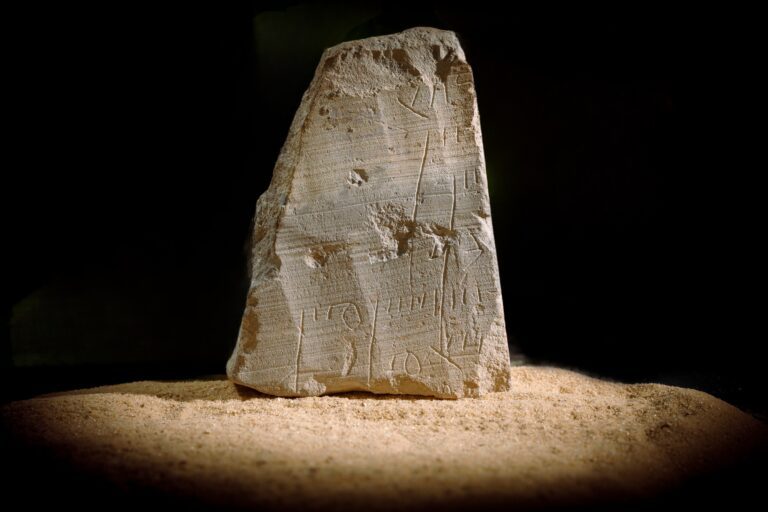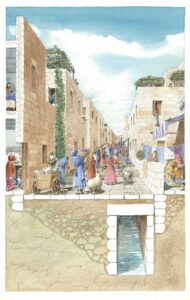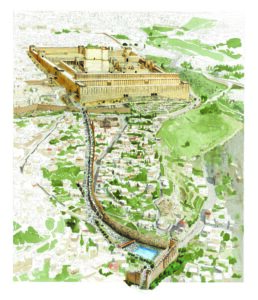Second Temple Period Receipt Found in the City of David
July 18, 2023
During a salvage excavation of a 19th-century excavation tunnel underneath the City of David, archaeologists from the Israel Antiquities Authority (IAA) discovered a fragmentary inscription dating to the Second Temple period. According to the IAA, the inscription, written on a chalkstone slab, was likely intended as a receipt or sales record.
Keep Your Receipt

The inscription of a financial record from the City of David. Courtesy Eliyahu Yanai, City of David.
The small, fragmentary inscription, which measures 3.5 by 2.5 inches, contains seven lines of text, written in the cursive Aramaic script used in Judah during the first century CE. Published in the journal ‘Atiqot, the inscription’s most complete line lists a man named Shimon, one of the most common Jewish names of the early Roman period (c. 37 BCE–70 CE). The name is preceded by the letter mem, which the scholars take to be a shorthand form of the Hebrew word ma’ot (money). According to the IAA, the inscription provides additional evidence for the economic importance of the City of David area during the time of the Romans. Given the fragmentary nature of the inscription, however, it is impossible to know whether it was written in Hebrew or Aramaic.
The inscription was carved into the chalkstone slab by someone who was not a trained scribe, perhaps a local businessperson. The slab itself was most likely part of a lid from an ossuary (funerary bone box), though the IAA is uncertain if the inscription was connected to the ossuary itself or was simply a fragment that was used by the ossuary maker to record sales. Similar inscriptions written on ossuary lids that date to the same period have been found in Beit Shemesh and the wider Jerusalem area. The other inscriptions were key to understanding the new fragment, which unfortunately was not found in its original archaeological context.

Drawing of the Pilgrimage Road, running from the Pool of Siloam to the Second Temple. Courtesy Shalom Kveller, City of David Archives.
The slab was not found in new excavations but rather from an old excavation tunnel created in the 19th century. Despite the lack of archaeological context, the IAA researchers date the inscription to either the first century BCE or CE, based on the script and other similar finds. The tunnel where the inscription was found is located along the City of David’s Pilgrimage Road, a controversial underground tunnel excavation beneath a modern Jerusalem neighborhood that follows the path of an ancient Roman road. In antiquity, the Pilgrimage Road connected the area of the Siloam Pool in the south of the City of David to the gates of the Temple Mount and served as the city’s main thoroughfare.

